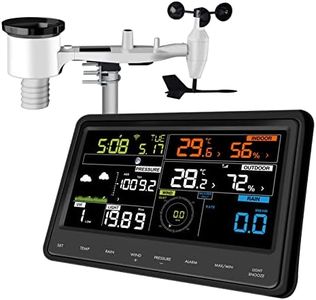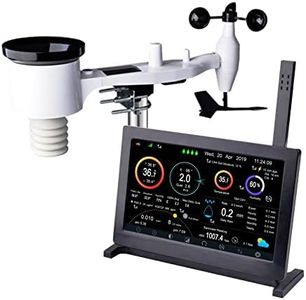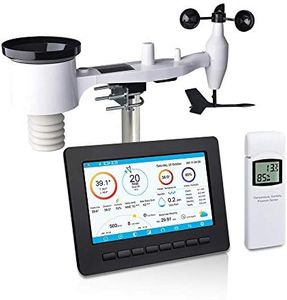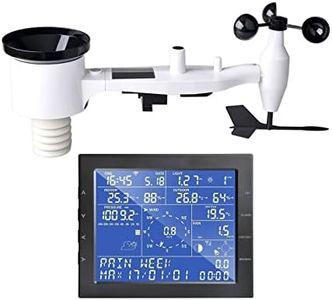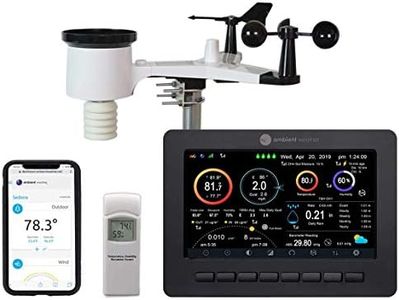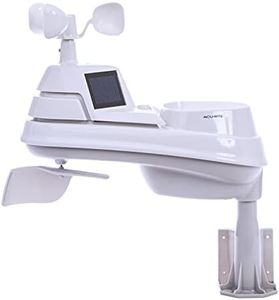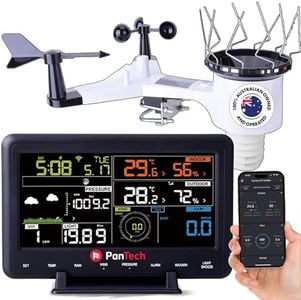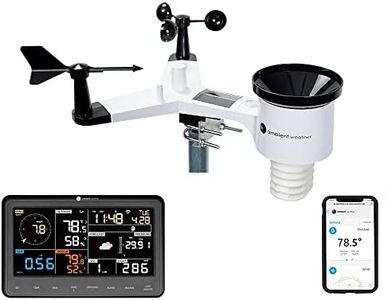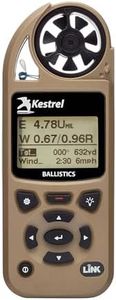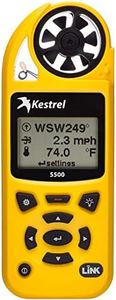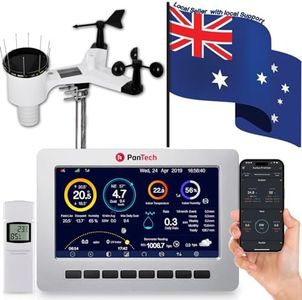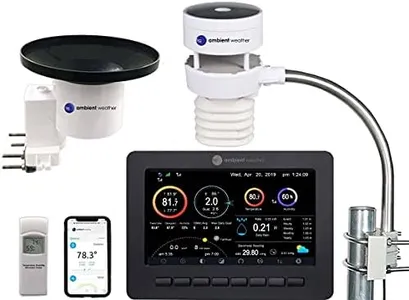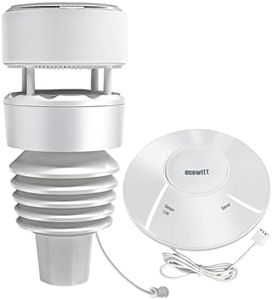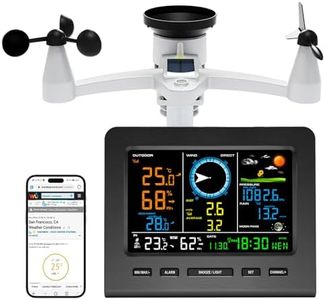We Use CookiesWe use cookies to enhance the security, performance,
functionality and for analytical and promotional activities. By continuing to browse this site you
are agreeing to our privacy policy
10 Best Weather Stations
From leading brands and best sellers available on the web.Buying Guide for the Best Weather Stations
Choosing the right weather station can truly enhance your experience of monitoring local weather conditions, whether it’s for home gardening, outdoor activities, or simple curiosity. Since weather stations come with a wide range of features and complexities, it's best to focus on what types of measurements you actually want to track and how you'll use the data. Considering ease of use, accuracy, and expandability will help make sure you get the most value from your purchase.Sensor Types and MeasurementsThis specification refers to what weather elements the station can measure, like temperature, humidity, rainfall, wind speed, barometric pressure, and sometimes UV or solar radiation. It's important because more sensors mean more detailed information, but also potentially more maintenance. Simpler models may measure just temperature and humidity, while more advanced ones track a full suite of weather conditions. Think about why you want a weather station—basic models are great for indoor/outdoor comfort, while garden enthusiasts or weather hobbyists may want extra measurements like rainfall or wind.
AccuracyAccuracy describes how closely the weather station’s readings match the true values of the environment. This matters because small errors can lead to misleading conclusions, especially for things like gardening or planning outdoor work. Entry-level weather stations often have higher margins of error, while advanced models offer tighter tolerances. If you need data to be ‘good enough’ for general awareness, moderate accuracy is fine; for scientific tasks or detailed analysis, look for stations with a reputation for precision.
Connectivity and Data AccessThis is about how you collect and view the data your station gathers—options include direct displays, mobile apps, or integration with computers and smart home systems. Some stations only show data on a local display, while others offer Wi-Fi or Bluetooth connection for remote access and historical tracking. If you want easy access from anywhere or to share your weather data online, seek a station with solid connectivity features. Those who just want quick checks at home can opt for simpler display-based models.
Power SourceWeather stations can be powered by batteries, solar panels, or AC adapters. This affects maintenance and placement options. Battery-powered stations are versatile but need occasional battery changes; solar options are low-maintenance if installed in sunny spots; AC-powered stations work best near outlets. Think about where you'll put the station and how easy it will be to perform upkeep when choosing the power source.
Installation and Mounting OptionsHow and where you can mount the sensors influences both the accuracy and longevity of your station. Some stations are designed for quick setup on a window or fence, while others require more involved mounting on poles or rooftops for optimal measurements. If you're looking for a simple device, pick one with straightforward installation; for the best data, look for stations offering flexible and robust mounting solutions that suit your environment.
ExpandabilityExpandability refers to whether you can add more sensors or upgrade parts of the station in the future. This matters if you think your needs might grow, like adding soil moisture sensors after getting into gardening. Basic models are usually fixed, while more advanced ones allow upgrades. If you see yourself wanting to monitor more conditions over time, choose a station that lets you add sensors as needed.
